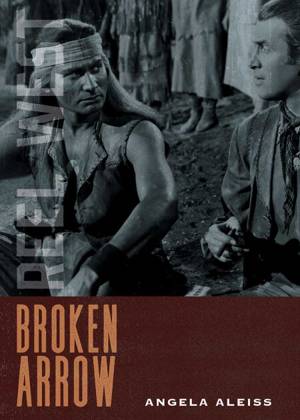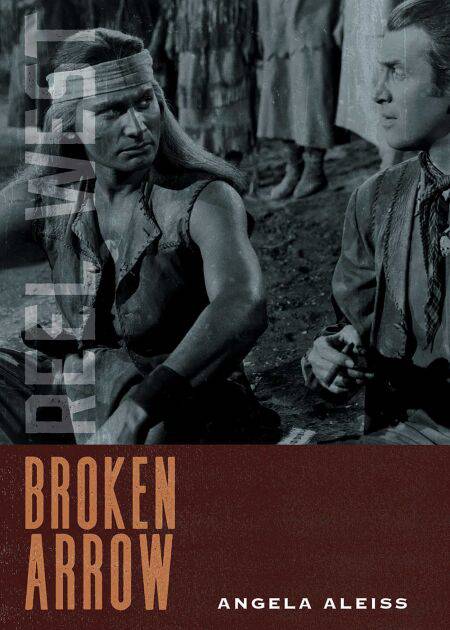
Bedankt voor het vertrouwen het afgelopen jaar! Om jou te bedanken bieden we GRATIS verzending (in België) aan op alles gedurende de hele maand januari.
- Afhalen na 1 uur in een winkel met voorraad
- In januari gratis thuislevering in België
- Ruim aanbod met 7 miljoen producten
Bedankt voor het vertrouwen het afgelopen jaar! Om jou te bedanken bieden we GRATIS verzending (in België) aan op alles gedurende de hele maand januari.
- Afhalen na 1 uur in een winkel met voorraad
- In januari gratis thuislevering in België
- Ruim aanbod met 7 miljoen producten
Zoeken
Omschrijving
An insightful history and analysis of the importance Delmer Daves' film Broken Arrow has in the western film genre. It was, for its time, a breakthrough in how Native Americans were depicted in the movies.
The release of Broken Arrow in 1950 represented a turning point in Hollywood’s portrayal of Native Americans. Film scholars have often cited director Delmer Daves’s movie as the first sound film to depict the Native American sympathetically, and it appealed to a postwar ideal of tolerance and racial equality that became prominent in later Westerns. Yet Broken Arrow certainly has its flaws: the Apache speak English, whites are cast in leading Apache roles, and Apache culture is highly romanticized. Additionally, many scholars agree that the movie lacks the polish of Daves’s later Western 3:10 to Yuma (1957), with its evocative cinematography and psychological undertones.
Despite its inaccuracies and the many artistic liberties it takes, the movie contains powerful political and social statements about Hollywood and its attitude toward Indian/white relations. Author Angela Aleiss breaks down the way Broken Arrow probed these attitudes and influenced a long series of films with Native heroes that followed, marking a transformation in Hollywood’s portrayal of Native Americans.
The release of Broken Arrow in 1950 represented a turning point in Hollywood’s portrayal of Native Americans. Film scholars have often cited director Delmer Daves’s movie as the first sound film to depict the Native American sympathetically, and it appealed to a postwar ideal of tolerance and racial equality that became prominent in later Westerns. Yet Broken Arrow certainly has its flaws: the Apache speak English, whites are cast in leading Apache roles, and Apache culture is highly romanticized. Additionally, many scholars agree that the movie lacks the polish of Daves’s later Western 3:10 to Yuma (1957), with its evocative cinematography and psychological undertones.
Despite its inaccuracies and the many artistic liberties it takes, the movie contains powerful political and social statements about Hollywood and its attitude toward Indian/white relations. Author Angela Aleiss breaks down the way Broken Arrow probed these attitudes and influenced a long series of films with Native heroes that followed, marking a transformation in Hollywood’s portrayal of Native Americans.
Specificaties
Betrokkenen
- Auteur(s):
- Uitgeverij:
Inhoud
- Aantal bladzijden:
- 168
- Taal:
- Engels
- Reeks:
Eigenschappen
- Productcode (EAN):
- 9780826368331
- Verschijningsdatum:
- 6/10/2025
- Uitvoering:
- E-book
- Beveiligd met:
- Adobe DRM
- Formaat:
- ePub

Alleen bij Standaard Boekhandel
+ 11 punten op je klantenkaart van Standaard Boekhandel
Beoordelingen
We publiceren alleen reviews die voldoen aan de voorwaarden voor reviews. Bekijk onze voorwaarden voor reviews.









